Facial Feminization Surgery (FFS) in Cambodia
Search and Compare the Best Clinics and Doctors at the Lowest Prices for Facial Feminization Surgery (FFS) in Cambodia

Find the best clinics for Facial Feminization Surgery (FFS) in Cambodia
No clinics available
Thailand offers the best prices Worldwide
Price: $ 1,945

- Home
- Cambodia
Compare Before & After Photos of _procedure_photos.phpFacial Feminization Surgery (FFS)
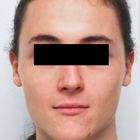
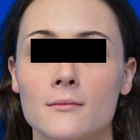
Front view
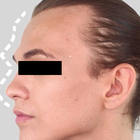

Half-side view
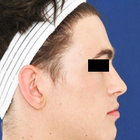
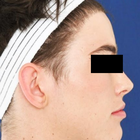
Full-side view
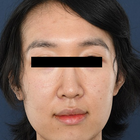

Front view
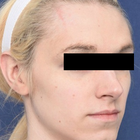

Half-side view
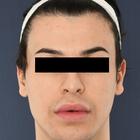
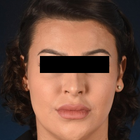
Front view
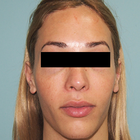

Front view
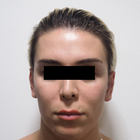

Front view
WHY US?
At Medijump, we're making medical easy. You can search, compare, discuss, and book your medical all in one place. We open the door to the best medical providers worldwide, saving you time and energy along the way, and it's all for FREE, no hidden fees, and no price markups guaranteed. So what are you waiting for?

Free

Best Price

Widest Selection

Risk-Free
What you need to know about Facial Feminization Surgery (FFS) in Cambodia
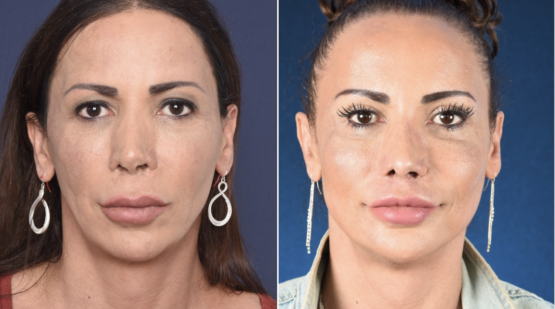
Facial Feminization Surgery, often abbreviated as FFS, is an extensive surgical process designed to modify masculine facial characteristics into a more feminine appearance. The procedure comprises several surgeries including rhinoplasty, forehead recontouring, and jaw and chin modifications. FFS is frequently sought after by transgender women desiring to more authentically express their gender identity. Any potential patient is advised to consult with a licensed surgeon to personalize the surgical plan according to their specific needs and aspirations.
Facial Feminization Surgery (FFS) usually necessitates an exhaustive pre-procedure assessment. This involves a thorough review of the patient's medical history, a complete physical examination, a psychological evaluation, and possibly facial x-rays. The surgeon will also discuss the aesthetic objectives, benefits, risks, and potential complications of the surgery with the patient. A collaborative decision-making approach is used to ensure patient safety and contentment following the procedure.
In this before and after example, the patient underwent Rhinoplasty, Chin recontouring, Jaw reduction, Lip lift, and eyelid surgery (blepharoplasty). The photo is taken 4 months post-op.
What is the cost of Facial Feminization Surgery (FFS) in Cambodia?
Various elements such as the surgical complexity, hospital stays, anesthesiologist costs, and surgeon's fees influence Facial Feminization Surgery (FFS) pricing in Cambodia. On average, possible charges vary from $20,000 up to $50,000. A detailed price breakdown from your healthcare provider will provide an exact view of the cost details.
The value of the procedure does not necessarily need to compromise the quality and standards of the surgery. Gain clarity about what components are inclusive and exclusive in the overall cost to understand thoroughly what your payment encompasses. Insurance firms usually do not cover aesthetic procedures, hence comprehensive knowledge and prudent financial preparation will streamline the procedure and make the Facial Feminization Surgery (FFS) a valid investment in enhancing your self-perception and assurance.
What does a Facial Feminization Surgery (FFS) Procedure Involve?
Facial Feminization Surgery (FFS) entails a range of tailored techniques aimed at personal needs with a focus on feminizing and gently modifying the facial structure. These techniques may encompass forehead reshaping, adjustments to the jaw and chin, rhinoplasty, facelifts, and other unique enhancements. The rising trend in health and well-being-oriented medical research is mirrored in personalized surgery schemes, ensuring the outcomes are attuned to individuals.
Normally, a care center will execute an in-depth consultation process to comprehend your aesthetic aspirations and draft a surgical blueprint. This evaluation is essential in harnessing the maximum advantages from the Facial Feminization Surgery (FFS). Ensuring the health and safety of the patient, a pre-operative assessment, encompassing a review of physical health and mental well-being, is a crucial measure.
How Long Should I Stay in Cambodia for a Facial Feminization Surgery (FFS) Procedure?
During the planning phase for Facial Feminization Surgery (FFS), considering the necessary time for the operation and subsequent recovery is vital, in order to ensure a seamless return to standard duties. The length of your Cambodia visit is heavily influenced by the surgery’s intricacy, your personal health condition, and your recovery speed. Generally, a timeframe of one to two weeks is advised before getting back to everyday activities.
However, the precise timeline can differ considerably, with follow-up meetings commonly arranged during your stay. These are paramount for evaluating your progress and identifying any possible surgical complications. This window also presents a chance for practising respiratory exercises and other preventive health methods to expedite a seamless recovery. Adherence to all the instructions given by your surgeon during this term is critical, as this significantly influences the success rate of the Facial Feminization Surgery (FFS).
What's the Recovery Time for Facial Feminization Surgery (FFS) Procedures in Cambodia?
Recovery from Facial Feminization Surgery (FFS) can differ among individuals, largely depending on the procedure's scope and the patient's overall health. Usually, patients require approximately six weeks of recuperation before they can engage in strenuous activities. During this time, individuals may experience swelling, bruising, and discomfort related to the surgery, but these symptoms typically diminish over time.
Getting plenty of rest, maintaining adequate hydration, and consuming a balanced diet can aid in accelerating recovery. It's vital to strictly follow the healthcare provider's advice regarding prescribed medicines, care of surgical wounds, and limitations on activities to prevent complications and promote healing. Keep in mind that health and well-being extend beyond the surgical procedure itself, so comprehensive aftercare is essential for successful outcomes.
What sort of Aftercare is Required for Facial Feminization Surgery (FFS) Procedures in Cambodia?
Appropriate aftercare is a vital component of successful Facial Feminization Surgery (FFS) and significantly influences the recovery process. It may include prescribed medications, regular medical check-ups, custom-made nutrition plans, and effective weight management. The recovery phase could span several weeks, during which adequate rest is paramount for a seamless recuperation.
Patients are often advised by their surgeons to temporarily abstain from rigorous physical activities and to maintain a healthy lifestyle. The latter should incorporate balanced nutrition, staying hydrated, taking supplements, and ensuring proper sleep and mental health management. It's important to note that adherence to the prescribed aftercare plan and attendance at follow-up visits are key to tracking improvements and promptly addressing any potential complications.
What's the Success Rate of Facial Feminization Surgery (FFS) Procedures in Cambodia?
Facial Feminization Surgery (FFS) is recognized as an extremely successful surgery that produces transformative and enduring outcomes. The success rate fluctuates depending on various factors, including the proficiency of the surgeon, the overall health of the patient, and the quality of care after the surgery. A majority of patients report high levels of satisfaction, citing increased self-confidence and an enhanced quality of life.
It's important to understand, however, that despite its high success rate, the procedure isn't without potential risks and complications. Complications like infections, scarring, and dissatisfaction with the aesthetic outcome are potential, though they are rare occurrences. Thorough pre-operative evaluations, skilled surgical hands, and comprehensive post-operative care significantly lessen these risks. Consequently, when selecting the most suitable protocol for your Facial Feminization Surgery (FFS), the guiding factors should be patient safety and satisfaction.
Check out this video for before and after images of FFS patients, you'll be amazed by some of the results made possible by this surgical procedure.
Are there Alternatives to Facial Feminization Surgery (FFS) Procedures in Cambodia?
Bear in mind that each person's needs and preferences are distinct, and surgical interventions might not be the most suitable route for everyone. There are other alternatives available for those who might be more inclined towards non-surgical solutions. Aesthetic treatments like injectable fillers, Botox, and others can simulate some effects of the Facial Feminization Surgery (FFS) on a temporary basis. However, cosmetic treatments of this kind typically necessitate ongoing sessions to preserve the sought after result.
Furthermore, some individuals might prefer to engage in psychological or behavioral therapies that encourage self-acceptance and a positive body image. Such therapies address the mental health components of self-image and gender dysphoria, offering a different perspective to surgery. Having open-ended discussions with healthcare providers to explore all the available options prior to making a decision is strongly advised.
What Should You Expect Before and After the Facial Feminization Surgery (FFS)?
Prior to undertaking Facial Feminization Surgery (FFS), patients participate in an in-depth consultation process. During this stage, surgeons evaluate the individual's health status, expectations, and motivations to design a treatment program that best meets their needs. Various health screenings may be conducted to verify the patient's physical suitability for the operation.
Post-procedure, initial weeks may bring about some degree of discomfort, swelling, and bruising, which will progressively decrease. Adequate post-procedure care can significantly improve recovery and the ultimate outcome of your Facial Feminization Surgery (FFS). It's crucial to maintain regular communication with your surgeon and promptly report any unusual symptoms. The goal is to ensure a successful surgical procedure followed by a rapid and smooth recovery, guiding you towards a more self-assured version of yourself.
What is the Preoperative Preparation for Facial Feminization Surgery (FFS) in Cambodia?
Preparing for Facial Feminization Surgery (FFS) entails addressing both physical and mental aspects to ensure successful surgery and recuperation. Patients undergo comprehensive evaluations involving various diagnostic tests to determine their overall health and suitability for the surgery. Moreover, patients may need to halt tobacco use, moderate alcohol consumption, and adjust certain medications—especially those affecting blood clotting—as these factors could disrupt both the surgical process and healing.
In addition, therapy sessions may be suggested to assist individuals in managing the psychological implications of such a life-changing procedure. A balanced diet is also pivotal in enhancing the body's healing capacity; adopting a healthy eating regimen, such as the Mediterranean diet, and considering suitable nutritional supplements can optimize preoperative preparation. Emphasizing mental wellbeing is another vital aspect of the journey, and implementing stress management strategies can prove beneficial during this period.
What are the Long-term Implications of Facial Feminization Surgery (FFS) in Cambodia?
Facial Feminization Surgery (FFS) is often viewed as a long-term commitment that yields lasting and significant transformations. It significantly enhances self-image and self-confidence, leading to a substantial improvement in life quality. Though the changes induced by the surgery are generally unchanging, sustaining a consistent weight and adopting a healthy lifestyle are vital in preserving the results.
It's important to bear in mind that adjusting psychologically is an integral aspect of such a transformative experience. Individual or group therapies can aid in navigating these changes, fostering deep-seated growth and self-understanding following the Facial Feminization Surgery (FFS). Always remember, the success of a procedure goes beyond the physical alteration—it also involves overall wellbeing, health, and a positive life perspective.
Whilst the information presented here has been accurately sourced and verified by a medical professional for its accuracy, it is still advised to consult with your doctor before pursuing a medical treatment at one of the listed medical providers
No Time?
Tell us what you're looking for and we'll reachout to the top clinics all at once
Enquire Now

Popular Procedures in Cambodia
Prices Start From $96

Prices Start From $111

Prices Start From $70

Prices Start From $16

Prices Start From $220

Prices Start From $28

Prices Start From $672

Prices Start From $275

Prices Start From $101

Prices Start From $556

Prices Start From $4,377

Recommended Medical Centers in Cambodia for procedures similar to Facial Feminization Surgery (FFS)

- Interpreter services
- Translation service
- Religious facilities
- Medical records transfer
- Medical travel insurance
- Health insurance coordination
- TV in the room
- Safe in the room
- Phone in the room
- Private rooms for patients available

- Interpreter services
- Translation service
- Religious facilities
- Medical records transfer
- Medical travel insurance
- Health insurance coordination
- TV in the room
- Safe in the room
- Phone in the room
- Private rooms for patients available

- Interpreter services
- Translation service
- Religious facilities
- Medical records transfer
- Medical travel insurance
- Health insurance coordination
- TV in the room
- Safe in the room
- Phone in the room
- Private rooms for patients available

- Interpreter services
- Translation service
- Religious facilities
- Medical records transfer
- Medical travel insurance
- Health insurance coordination
- TV in the room
- Safe in the room
- Phone in the room
- Private rooms for patients available

- Interpreter services
- Translation service
- Religious facilities
- Medical records transfer
- Medical travel insurance
- Health insurance coordination
- TV in the room
- Safe in the room
- Phone in the room
- Private rooms for patients available

- Interpreter services
- Translation service
- Religious facilities
- Medical records transfer
- Medical travel insurance
- Health insurance coordination
- TV in the room
- Safe in the room
- Phone in the room
- Private rooms for patients available

- Interpreter services
- Translation service
- Religious facilities
- Medical records transfer
- Medical travel insurance
- Health insurance coordination
- TV in the room
- Safe in the room
- Phone in the room
- Private rooms for patients available

- Interpreter services
- Translation service
- Religious facilities
- Medical records transfer
- Medical travel insurance
- Health insurance coordination
- TV in the room
- Safe in the room
- Phone in the room
- Private rooms for patients available
Facial Feminization Surgery (FFS) in and around Cambodia
Introduction
Perched in the heart of Southeast Asia, nestled between Thailand and Vietnam, lies Cambodia — a dynamic blend of ancient and contemporary worlds that makes for an intriguing adventure. Dominating its list of attractions is the globally-renowned Angkor Wat, embroidered by lush jungles.
It is the soul of Cambodia — its vibrant culture, warm inhabitants, profound historical heritage, stunning coastlines, delightful cuisine, and spirited nightlife — that gives this nation its unique charm. Each element, individually fascinating and collectively harmonious, weaves a magical tapestry that is Cambodia.
Over recent years, Cambodia has strategically bolstered its healthcare infrastructure, aiming to appeal to a global patient community. In this endeavor, the country has witnessed several of its hospitals forging partnerships with institutions from close-by countries, with Thailand being a significant partner.
These strategic alliances have been key in establishing state-of-the-art healthcare facilities across Cambodia. These healthcare establishments strive to cater to a diverse array of medical needs, ensuring the delivery of world-class, professional care that meets, if not surpasses, internationally accepted standards.
Cambodia is relentlessly driving efforts to enhance its healthcare sector, with one main goal - to give patients access to top-notch medical care at costs significantly lower than those in other Southeast Asian nations, Singapore being a prime example.
This strategic approach is geared towards attracting patients from regions like Laos, Taiwan, and China. The essence of this approach is to establish Cambodia as a major healthcare destination that offers high-quality medical services, all within a budget-friendly framework that doesn’t strain patients' finances.
Popular Cities and Regions in Cambodia
Phnom Penh is the capital of Cambodia, as well as the main medical tourism destination in the country. Once the ‘Pearl of Asia,’ this bustling city is now filled with bustling bars, historical architecture, vibrant café culture, a world-class food scene, and a glimmering Royal Palace.
Tourists venturing into Cambodia are invited to traverse the myriad attractions this enchanting nation has to offer. A must-visit is the National Museum of Cambodia which houses the country's extensive cultural history and art. For those who seek a deeper insight into Cambodia's past, the Tuol Sleng Genocide Museum provides a poignant yet important glimpse into the darker chapters of its history. In addition, the Royal Palace stands as a testament to Cambodia's architectural grandeur, drawing admiration from visitors across the globe. Another gem to explore in Phnom Penh is the Silver Pagoda, a unique blend of tranquility and exquisite craftsmanship, making for an unforgettable experience.
Moving beyond the capital city of Phnom Penh, Siem Reap emerges as another popular destination in the Cambodian travel circuit. This city, bustling with energy and soaked in history, captures the diverse ethos of Cambodia in its vibrant art, architecture, and local life. Inclusion of Siem Reap in any Cambodian itinerary lends an additional layer of cultural depth, making the exploration of this intriguing nation an even more enticing proposition. As such, whether it's diving into the past or experiencing the dynamic present, Cambodia offers a varied palette of experiences to delve into.
It’s where the fascinating, UNESCO-listed Angkor Wat is located. Aside from Angkor Wat, Siem Reap also offers other attractions, such as the Angkor Silk Farm, Wat Bo, War Museum, and Senteurs d’Angkor Botanic Garden. Those who want to relax on a beach should visit Sihanoukville. It was once a quiet beach town, but now it has become a modern up-and-coming holiday destination.
Transport in Cambodia
Phnom Penh International Airport stands as the largest and most bustling airport in Cambodia. Acting as a critical transportation nexus, it facilitates both domestic and international air travel. The airport offers numerous flight connections to various cities across Asia, making it a convenient choice for international tourists. Besides being a gateway into Cambodia, it also serves as a starting point for internal travel.
For tourists looking to cover various parts within the country swiftly, opting for domestic flights is a time-efficient choice. These flights are well-linked, providing easy access to different parts of this captivating country. Despite being the fastest mode of travel, they maintain reasonable fares, ensuring that the journey is equally enjoyable as the destination.
As one navigates within the cities, there is a disparity between the modes of transportation used for intra-city and inter-city travel. While trains and buses are the preferred options for traveling between different cities due to their affordability, city-based transportation adopts a different palette altogether. For daily city commutes and quick visits to local sights, taxis, tuk-tuks, and motorbikes are the most viable options. They're not only readily available but also allow for an intimate view of Cambodian city life. This dynamic and efficient transportation network significantly enhances the convenience of exploring Cambodia's stunning expanse.
Visas in Cambodia
- Citizens of 9 countries, including Laos and Singapore, can visit and stay in Cambodia for up to 30 days without a visa.
- Citizens of most other countries can apply for a visa on arrival or eVisa.
- All visitors must have a passport valid for at least six months beyond their intended date of departure from Cambodia.
Visa on arrival
- A visa on arrival can be obtained at any of the following Cambodian airports: Phnom Penh International Airport (PNH), Siem Reap International Airport (REP), and Sihanoukville International Airport (KOS).
- The visa on arrival fee is USD 30.
- Visitors who obtain a visa on arrival must have a valid passport and two passport-size photos.
eVisa
- An eVisa can be obtained online at the website of the Cambodian government.
- The eVisa fee is USD 35.
- Visitors who obtain an eVisa must have a valid passport and a digital photo.
Weather in Cambodia
Cambodia is blessed with a warm climate throughout the year, making it a destination for all seasons with temperatures seldom falling below 20°C. Cambodian weather is generally categorized into two primary seasons: wet and dry. The wet season, spanning from May to October, is marked by episodic showers during daytime hours, adding to the country's tropical charm.
The dry season, commencing from November and extending up to April, is typified by agreeable and sunny weather conditions, making it an ideal time for travel and exploration. However, it is worth noting that during the peak of the dry season, specifically in March, temperatures can climb up to a sweltering 35°C. Despite the somewhat extreme conditions, the resplendent beauty of the country remains undeterred, with Cambodia promising a riveting experience regardless of the season.
Additional Info
- Local Currency: Cambodian riel (KHR) is the official currency and 1 USD converts to approx. 4,161.63 KHR. However, USD is widely accepted.
- Money & Payments: ATMs are widely available and sometimes dispense US dollars. Credit cards are accepted in major cities. Tipping is expected and appreciated.
- Local Language: The official and mainly spoken language is Khmer. Some people also speak Vietnamese and Chinese. English is mostly used in tourist areas and major cities.
- Local Culture and Religion: About 97% of the population follows Theravada Buddhism. Islam, Christianity, and tribal animism make up the remaining 3%.
- Public Holidays: Victory over Genocide Day, Khmer New Year, King’s Birthday, Day of Remembrance, and Independence Day are some of the public holidays celebrated in Cambodia.
Popular Searches
- Plastic Surgery in Thailand
- Dental Implants in Thailand
- Hair Transplant in Thailand
- Breast Augmentation Thailand
- Gastric Sleeve in Thailand
- Gender Reassignment Surgery in Thailand
- Laser Hair Removal in Bangkok
- Botox in Bangkok
- Dermatology in Bangkok
- Breast Augmentation in Bangkok
- Coolsculpting in Bangkok
- Veneers in Turkey
- Hair Transplant in Turkey
- Rhinoplasty in Turkey
- Stem Cell Therapy in Mexico
- Rhinoplasty in Mexico
- Liposuction in Mexico
- Coolsculpting in Tijuana
- Rhinoplasty in Korea
- Scar Removal in Korea
- Gastric Sleeve in Turkey
- Bone Marrow Transplant in India
- Invisalign in Malaysia
- Plastic Surgery in the Dominican Republic
- Tummy Tuck in the Dominican Republic
- Plastic and Cosmetic Surgery in Poland
- Rhinoplasty in Poland
- Hair Implant in Poland
- Dental Implants in Poland
- IVF in Turkey